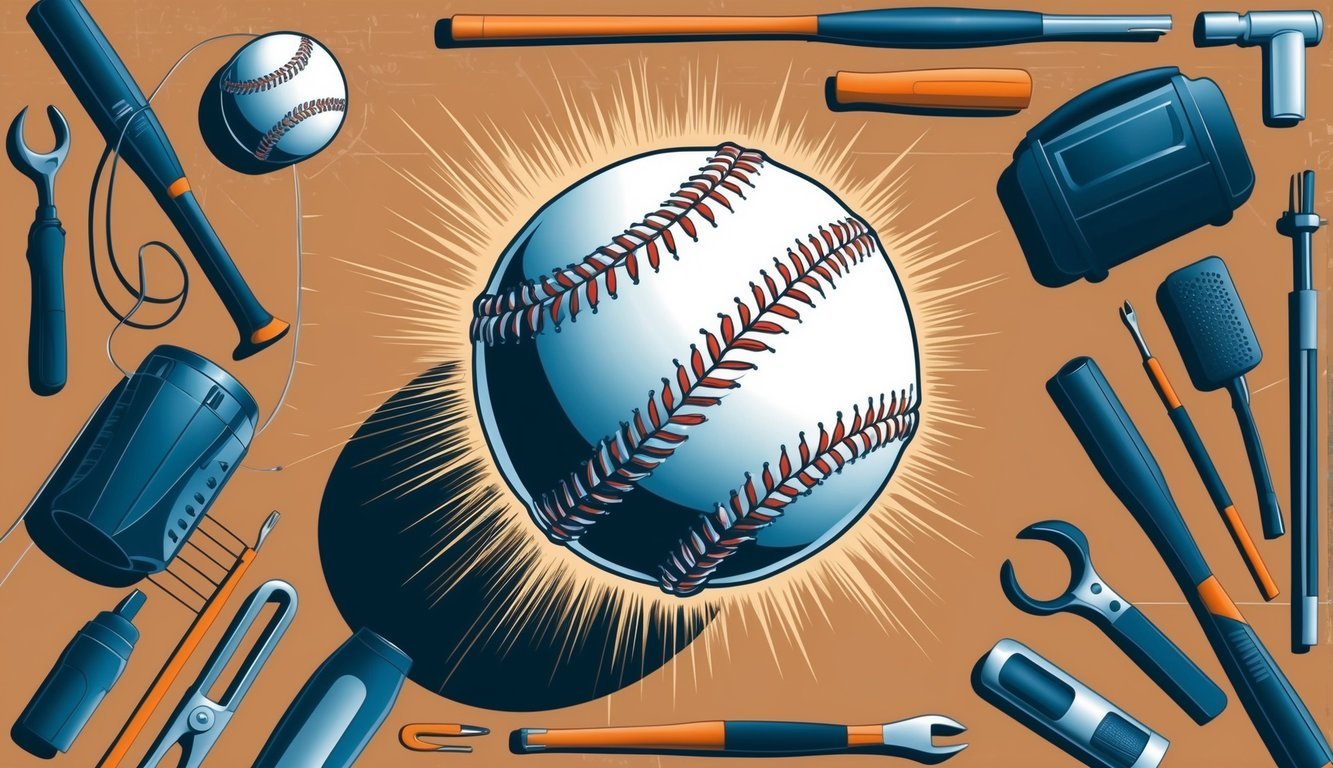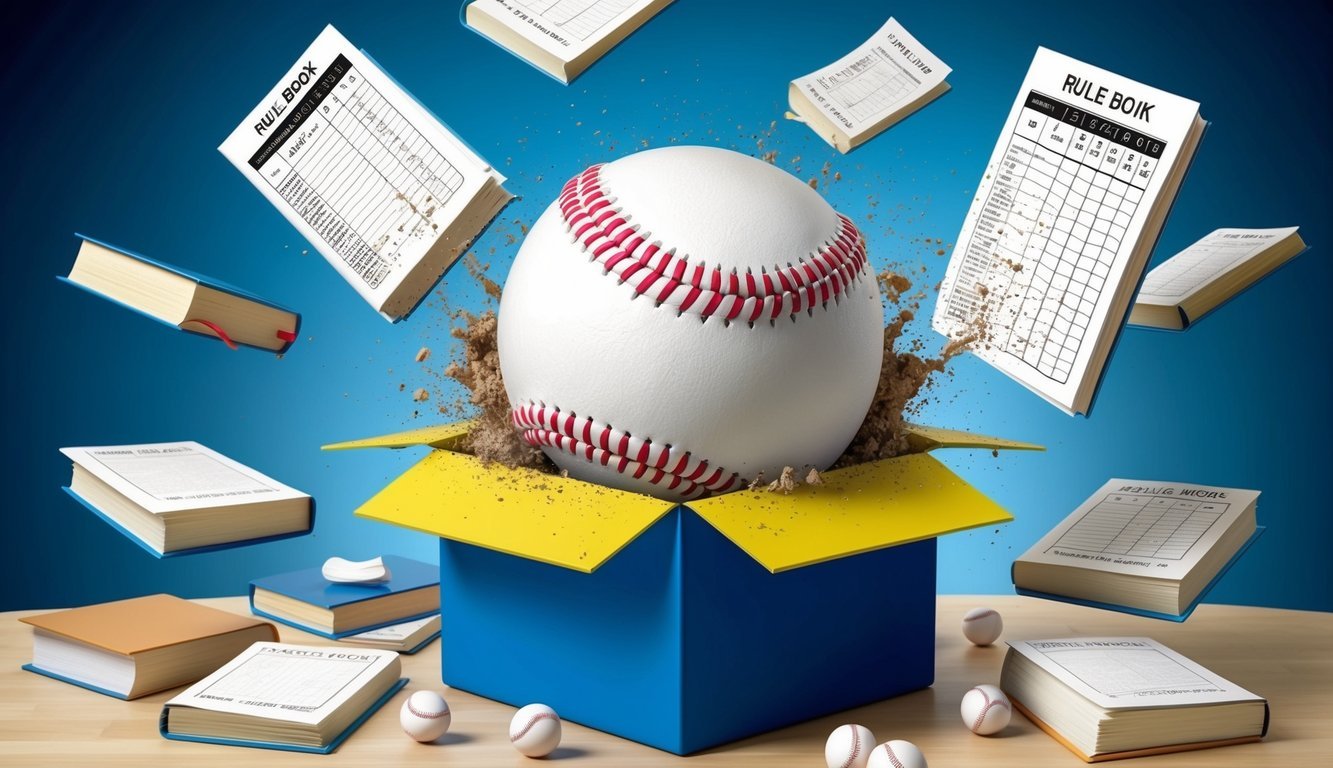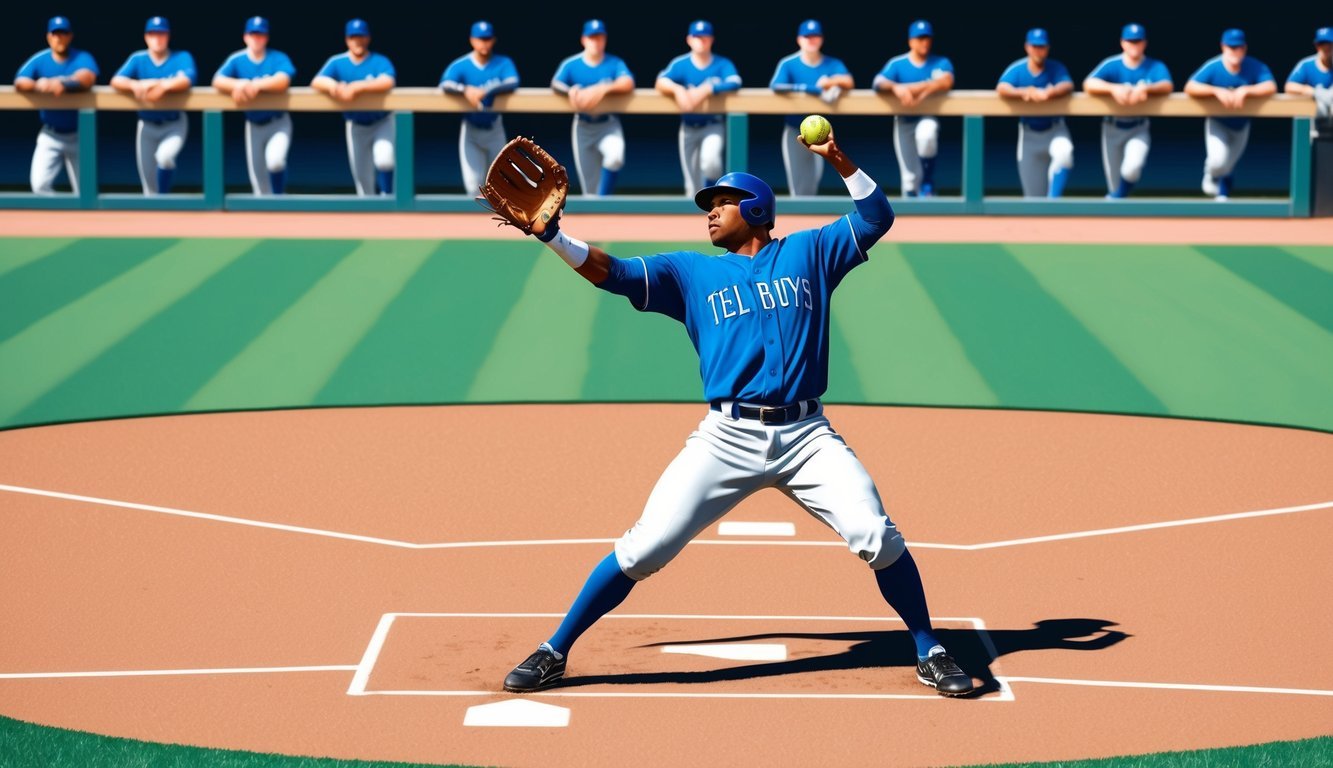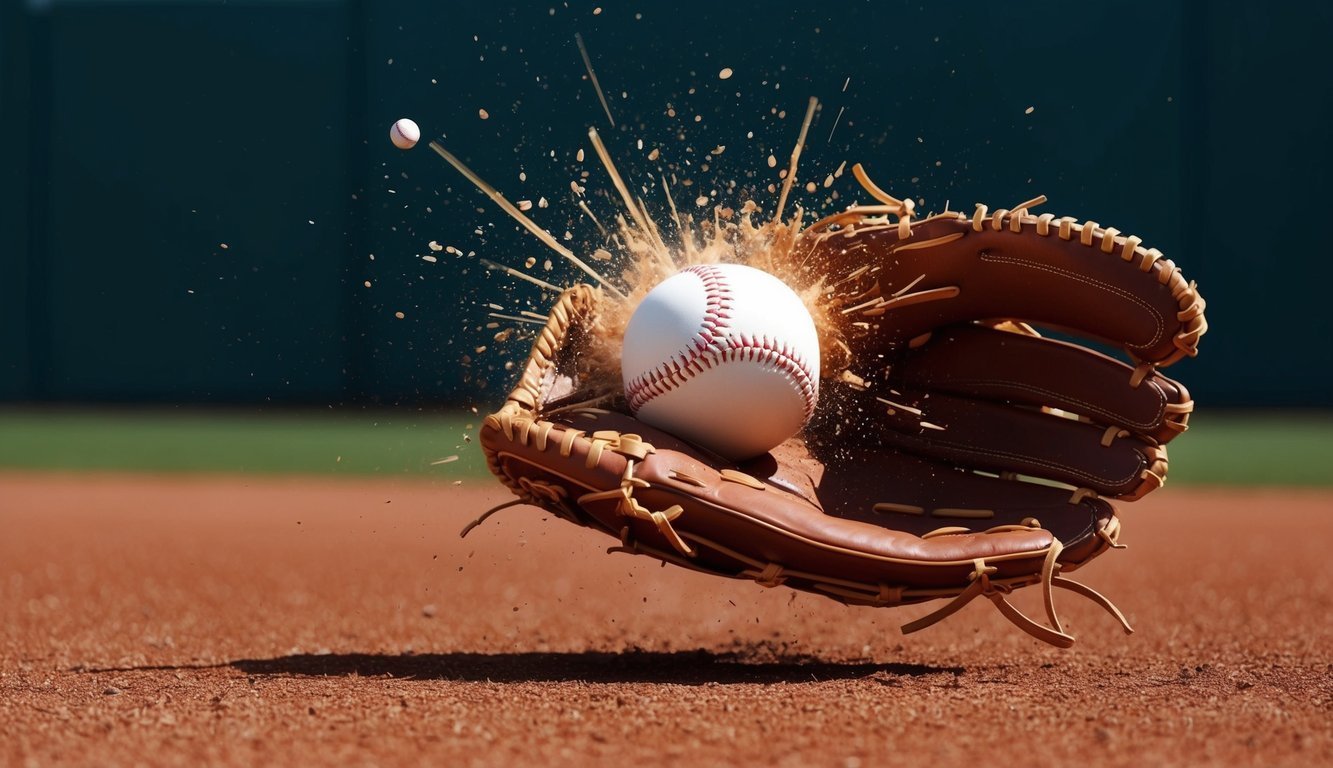Baseball terminology can be confusing for newcomers and even some seasoned fans.
One term that often raises questions is “pop out.” A pop out occurs when a batter hits the ball high in the air but not very far, allowing an infielder to catch it before it hits the ground.
This results in an automatic out for the batter.
Pop outs are common in baseball and can be frustrating for hitters.
They typically happen when a batter fails to make solid contact with the pitch, often hitting the bottom half of the ball.
This causes the ball to rise quickly but lack distance, making it an easy catch for infielders.
Understanding pop outs is essential for players looking to improve their hitting technique.
Coaches often work with batters to adjust their swings and avoid popping out, as these plays rarely lead to productive at-bats.
For fans, recognizing pop outs adds depth to their appreciation of the game’s fundamentals and strategy.
Basics of a Pop Out in Baseball
A pop out is a common defensive play in baseball where the batter hits a short, high fly ball that’s caught by a fielder before touching the ground.
It’s a quick way for the defense to record an out and can shift momentum in the game.
Understanding the Pop Out
A pop out occurs when a batter makes weak contact with the pitch, resulting in a high, arcing ball that doesn’t travel far.
These hits typically stay within the infield or just beyond it.
The ball’s trajectory makes it easier for fielders to position themselves and make the catch.
Pop outs are different from fly outs, which usually travel deeper into the outfield.
They’re also distinct from line drives, which move more horizontally.
When a pop out happens, it’s often due to the batter being slightly late or early on their swing timing.
Fielders must call for the ball to avoid collisions.
The infield fly rule may apply in certain situations to prevent the defense from intentionally dropping the ball to turn a double play.
Role of the Batter
Batters generally try to avoid hitting pop ups, as they’re easy outs.
A pop out often results from:
- Swinging at a pitch outside the strike zone
- Poor bat angle at contact
- Hitting the ball off the end of the bat or too close to the hands
Experienced batters adjust their swing to reduce pop ups.
They aim for solid contact, driving the ball with a level or slightly upward swing path.
Some batters might intentionally hit pop ups in specific situations, like a sacrifice fly to score a runner from third base.
Defensive Players’ Involvement
Infielders are usually responsible for catching pop ups, but outfielders may also field them in shallow areas.
Key aspects of fielding pop outs include:
- Quick reaction time to get under the ball
- Proper positioning based on the batter and pitch location
- Communication with teammates to avoid collisions
- Secure catching technique, often using two hands
The catcher plays a crucial role in pop ups near home plate.
They must quickly remove their mask and track the ball while avoiding obstacles like the batter’s box and backstop.
Pitchers can strategically induce pop ups by throwing high fastballs or off-speed pitches that disrupt the batter’s timing.
This tactic can be effective, especially against pull hitters or those prone to swinging under the ball.
Fielding Dynamics
Successful pop out fielding requires precise coordination and swift decision-making across the entire defensive unit.
Players must master positioning, communication, and situational awareness to convert these crucial outs.
Infielder Strategies
Infielders play a vital role in handling pop-ups near the diamond.
Shortstops and second basemen often take charge on shallow pop flies, using their agility to cover ground quickly.
Third basemen excel at snagging tricky pop-ups along the foul line.
First basemen have a unique responsibility, frequently called upon to catch pop-ups in foul territory.
Their height advantage allows them to reach over dugouts or extend into the stands when necessary.
Infielders must constantly communicate, calling for the ball to avoid collisions.
They also need to be mindful of baserunners, ready to make a quick throw if the ball is dropped.
Outfielder Contribution
Outfielders are the last line of defense for deep pop flies.
The center fielder typically takes priority due to their central position and superior range.
They often cover vast distances to make spectacular catches.
Corner outfielders focus on their respective territories but must be ready to back up the center fielder on challenging plays.
Tracking the ball’s trajectory in different wind conditions is a crucial skill.
Outfielders also need to be aware of the wall, mastering the timing of their jumps to rob potential home runs.
Communication with infielders is key when pop-ups fall into the shallow outfield.
Additionally, outfielders should always keep an eye on the opposing team’s base runners, anticipating their movements to make swift and accurate throws.
During games, fans often look for home run derby ticket information, excited to see players showcase their power-hitting skills in a thrilling competition.
By maintaining strong focus and teamwork, outfielders can turn potential challenges into game-changing plays.
Pitcher and Catcher Coordination
While pitchers and catchers aren’t primary fielders for pop-ups, they play important supporting roles.
Pitchers need to be ready to field pop-ups near the mound, often resulting from bunts or weakly hit balls.
Catchers face the challenge of tracking pop-ups directly above or behind home plate.
They must quickly shed their mask and locate the ball against the sky.
Both pitchers and catchers serve as vocal leaders, directing their teammates to optimal fielding positions.
Their unique vantage points allow them to guide infielders and outfielders for the best chance at securing the out.
Advanced Skills and Techniques

Mastering advanced skills and techniques can significantly reduce pop-ups and improve overall performance in baseball.
These skills involve precise communication, trajectory tracking, and nuanced defensive play.
Communication and Precision
Effective communication among outfielders is crucial for preventing pop-ups and securing catches.
Players should call out “I’ve got it!” loudly and clearly when claiming a fly ball.
This prevents collisions and missed catches.
Hand signals also play a vital role, especially in noisy stadiums.
Outfielders must develop a keen sense of their teammates’ positions and strengths.
By understanding each other’s range and abilities, they can coordinate seamlessly to cover more ground.
Regular practice drills focusing on communication scenarios help build this teamwork.
Precision in movement is equally important.
Quick, decisive steps towards the ball’s landing spot can make the difference between a catch and a pop-up.
Drills that improve footwork and agility are essential for developing this skill.
Mastery of Trajectory Tracking
Tracking the trajectory of a baseball is a skill that separates great outfielders from good ones.
It involves quickly judging the ball’s path, speed, and likely landing spot.
One effective technique is the “read step.” As soon as the ball is hit, the outfielder takes a quick step back.
This creates a better angle for tracking the ball’s path.
From there, they can adjust their position more accurately.
Wind and sun conditions can greatly affect a ball’s trajectory.
Experienced players learn to factor these elements into their calculations.
They practice in various weather conditions to hone this skill.
Using the glove as a shield against the sun is another crucial technique.
Players should practice smoothly transitioning from shielding their eyes to catching position.
Defensive Play Nuances
Advanced defensive play involves more than just catching fly balls.
It includes strategic positioning, quick transitions, and smart decision-making.
Outfielders should study hitters’ tendencies and adjust their starting positions accordingly.
This can mean shading left or right, or playing deeper or shallower based on the batter’s history.
The crow hop technique is essential for strong, accurate throws from the outfield.
It involves a quick hop-step that transfers momentum into the throw.
Regular practice of this movement can significantly improve throw distance and accuracy.
Backing up plays is a often-overlooked but crucial aspect of outfield defense.
Players should always be moving to support their teammates, even when the ball isn’t hit to their area.
Rules and Scoring Implications

Pop outs in baseball involve specific rules and scoring considerations that impact gameplay and statistics.
These elements shape how plays unfold and are recorded.
Infield Fly Rule
The infield fly rule prevents fielders from intentionally dropping pop ups to turn double plays.
It applies with fewer than two outs and runners on first and second (or bases loaded).
The batter is automatically out if an infielder can catch the ball with ordinary effort.
Runners may advance at their own risk.
The rule protects the offense from unfair double plays.
Umpires signal by pointing up and calling “Infield fly!” Baserunners must be alert, as they can still be tagged out if they leave their base.
Scoring Opportunities
Pop outs can create scoring chances despite resulting in an out.
With less than two outs and a runner on third, a deep pop out to the outfield may allow the runner to tag up and score.
This is called a sacrifice fly.
Smart baserunning is crucial on pop ups.
Runners must judge if they can advance safely or need to tag up.
A poorly judged pop out can lead to double plays if runners are caught off base.
Batters aim to avoid pop outs, as they rarely produce runs.
Coaches often work with players to improve swing mechanics and reduce pop ups.
Official Scorer’s Role
The official scorer determines whether a batted ball is scored as a pop out, fly out, or line out.
They record the defensive player who made the catch and any resulting plays.
For pop outs, the scorer notes “P” followed by the fielder’s position number in the scorebook.
For example, “P6” indicates a pop out to the shortstop.
The scorer also tracks sacrifice flies, which don’t count as at-bats.
This affects a player’s batting average.
Strategic Aspects of Pop Outs

Pop outs play a crucial role in baseball strategy.
They offer opportunities for quick outs and can shift momentum in a game.
Pitchers, fielders, and hitters all consider pop outs in their tactical approaches.
Inducing Pop Outs
Pitchers aim to induce pop outs through specific techniques.
They may throw high fastballs or off-speed pitches to disrupt a batter’s timing.
Changing eye levels and pitch sequences can also lead to weak contact.
Elevated pitches often result in pop-ups when batters can’t square up the ball.
Some hurlers deliberately target the top of the strike zone.
This strategy exploits aggressive hitters looking to drive the ball.
Smart pitch selection is key.
Cutters and sliders moving away from hitters can be effective.
These pitches can cause batters to get under the ball, leading to easy pop outs.
Defensive Positioning
Teams adjust their defense to maximize pop out chances.
Infielders may play deeper against pop-up prone hitters.
This gives them more time to react and settle under the ball.
Outfielders consider wind direction and a batter’s tendencies.
They position themselves to cover the most likely landing spots for pop flies.
Communication is vital to avoid collisions on these plays.
Coaches analyze data to optimize fielder placement.
They look at spray charts and pop-up frequencies.
This information helps predict where pop outs are most likely to occur for each batter.
Benefits of Securing Pop Outs
Pop outs provide quick, easy outs that keep pitch counts low.
They help pitchers work efficiently through innings.
This can lead to longer outings and less strain on the bullpen.
Fielders enjoy pop outs as low-risk, high-reward plays.
They require less range than ground balls or line drives.
Successfully catching pop-ups can boost team morale and frustrate opposing hitters.
Pop outs often come at crucial moments.
A well-timed pop-up can kill rallies and preserve leads.
In close games, these plays can be game-changers, especially with runners on base.
